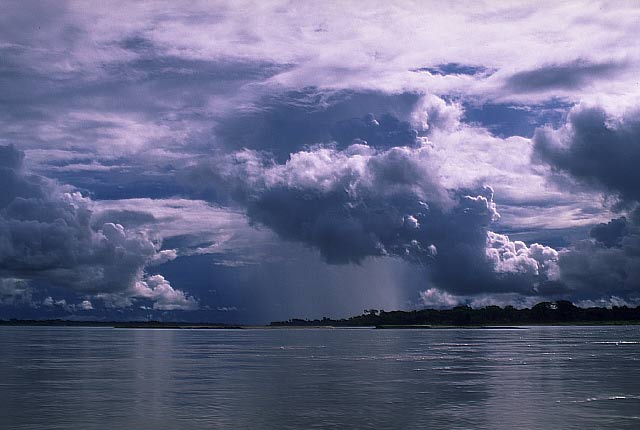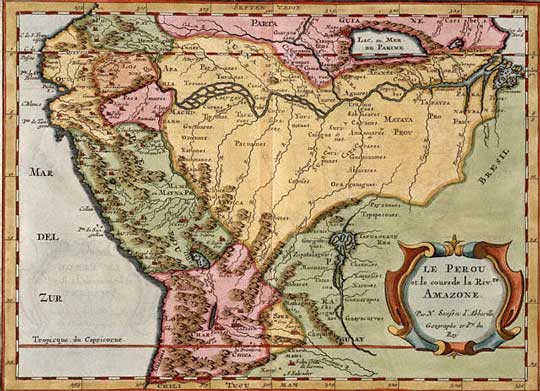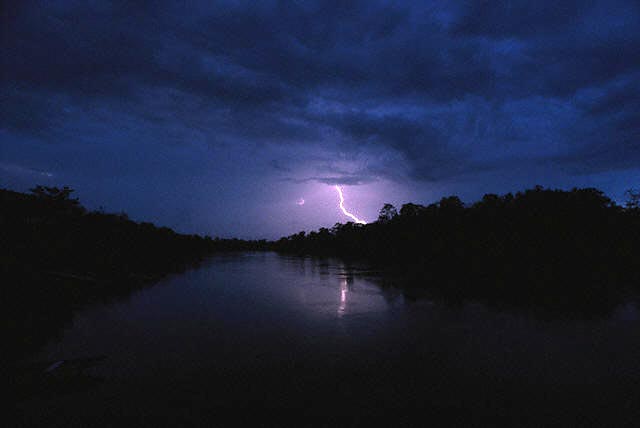
The city of Akakor was built up the Purus River in a valley of mountains between Brazil and Peru. Likely locations are the Madre de Dios Province of Peru and the Acre Province of Brazil. "The whole city is surrounded by a high stone wall with thirteen gates...The gates are so narrow they give access only to one person at a time, and the plain in the east is guarded by stone watchtowers where chosen warriors are always on the lookout for enemies.
"Akakor is laid out in rectangles. Two intersecting main streets divide the city into four parts corresponding to the four universal points of our Gods...The Temple of the Sun and a stone gate sit on a wide square in the center. The temple faces due east, toward the rising sun, and is decorated with symbolic images of our Former Masters..."
Tatunca described the city in great detailed - temples of artfully hewn stones, golden mirrors, life-size stone figures flanking the entrance to the temple, the temple's interior walls covered with relief, and that there is a large stone chest sunk into the front wall of the temple where the first written laws of their Former Masters is located.
He said there were another 26 stones cities around Akakor, the largest being Humbaya and Paititi in Boliva, Emin (near the lower reaches of the Great [Amazon] River) and Cadira in the mountains of Venezuela. "...all these (cities) were completely destroyed in the first great catastrophe 13 years before the departure of the Gods."

"...The ancient Fathers also erected three (3) sacred temple complexes: Salazere, on the upper reaches of the Great River, Tiahuanaco, on the Great Lake, and Manoa, on the high plain in the south." A giant pyramid was erected in the center of these sacred temple complexes and a broad stairway led up to the platform where ceremonies were conducted. Interestingly enough, Tiahuanaco is the only place named that is known today and does indeed have a pyramid located in its center.

Tatunca Nara said he had seen only Salazere with his own eyes,
which lies at a distance 8 days journey from Manaus at a tributary
of the Great River. Its palaces and temples have now become completely
overgrown by the Liana jungle. Only the top of the great pyramid rises above
the canopy of the forest.
According to Tatunca, there are also underground cities inside the mountains we call the Andes. Tunnels link "lower Akakor" with the underground cities. These tunnels are large enough to accomodate for five men walking upright and they are so extensive that it takes many days to reach one of the other cities. Tatunca said these underground cities were artificially illuminated by vertical shafts that ascended up to the surface where an enormous silver mirror dispersed light over the whole city. These tunnels and subterranean cities were built by the Former Masters.
From Tatunca Nara's memory, quoting the written Chronicle of Akakor:
"And the Gods ruled from Akakor. They ruled over men and the earth. They had ships faster than birds' flight, ships that reached their goal without sails or oars and by night as well as by day. They had magic stones to look into the distance so that they could see cities, rivers, hills, and lakes. Whatever happened on earth or in the sky was reflected in the stones. But the underground dwellings were the most wonderful of all. And the gods gave them to their Chosen Servants as their last gift. For the Former Masters are of the same blood and have the same father."

In year zero, the Former Masters left, but before they left there
was some kind of "War
between the Gods." This war was horrible and devasting. Afterwards,
the Former Masters left and a global catastrophe ensued. The
Ugha Mongulala and the surrounding tribes lapsed into 6,000 years
of barbarism.
In the year 13 (10,468 BC) the course of the rivers was altered, and the elevation of the mountains and the strength of the sun changed. (Could this be an account of a polar shift? with massive amounts of volcanic ash in the sky?)
During this time, "...Continents were flooded. The waters of the Great Lake (near Tiahuanaco?) flowed back into the oceans. The Great (Amazon) River was interrupted by a new mountain range and now flowed swiftly toward the east (and into the Atlantic Ocean.) Enormous forest grew on its banks. A humid heat spread over the easterly regions...In the west, where giant mountains had surged up, people froze in the bitter cold of the higher altitudes..." All this would be known as the "First Great Catastrophe."
After this first Great Catastrophe, the empire was set in ruins. Many of the passages that linked the borders of the empire were blocked; the mysterious light that illuminated the subterranean dwellings was extinguished; the twenty-six cities were destroyed by a tremendous flood; and "the sacred temple precincts of Salazere, Tiahunanaco, and Manoa lay in ruins, destroyed by the terrible fury of Gods."
This would NOT be the last.
|
|
|
SOURCE: Lost
Cities & Ancient Mysteries of South America by David
Hatcher Childress
Images purchased from corbis.com